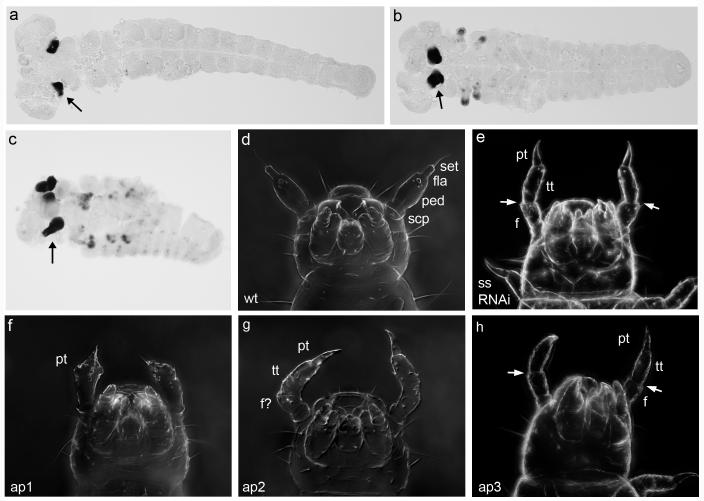Fig. 1.
Embryonic expression and larval phenotypes. a-c Tc-ss expression in Tribolium embryos. An arrow points to the antennal expression in each panel. a Tc-ss expression in the antennae of an extended germ band stage embryo. b As the germband retracts, Tc-ss is expressed in the maxillary and labial appendages, as well as the antennae. c A dorsally closing embryo continues to show strong Tc-ss expression the antennae as well as patches of expression in the other appendages. Additional punctate staining probably corresponds to peripheral nervous system cells. d-h Cuticle preparations of first instar larvae. d Wild-type larval antennae have a basal scape (scp), a pedicel (ped), a short cylindrical flagellar segment (fla) and a terminal seta (set). The antennae of Tc-ss RNAi (e), ap1 (f), ap2 (g) and ap3 (h) larvae are transformed toward leg. Leg segments are identified where relevant: pretarsus (pt), tibiotarsus (tt) and femur (f). Arrows in e and h point to the clear boundary between femur and tibiotarsus.

